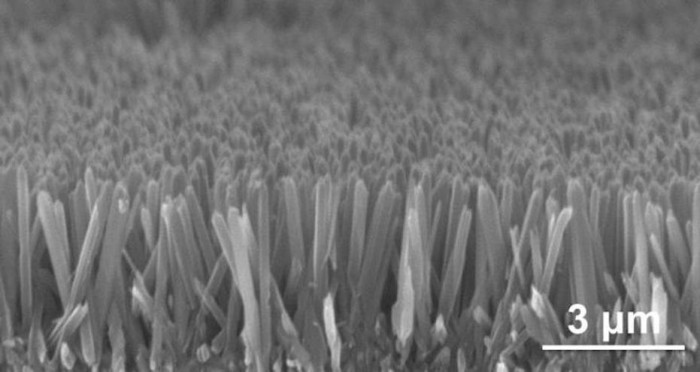A recent discovery in nanowire technology could lead to the creation of clothing that has the ability to cool us down. Professor Qing Wang and his team have discovered a nanowire material that could result in lightweight cooling systems. This has revolutionary potential for implementation in firemen’s suits, sportsmen’s gear and for temperature control. Wang, a professor of materials science and engineering at Penn State University, was able to isolate the characteristics that would allow the technology to be more flexible, and safer for human contact.
The goal of the project was to produce a nanowire material that was more versatile. They started by looking at electrocaloric materials, which are nanostructured materials, but which have the ability to change temperature when exposed to an electric field.
The electrocaloric materials usually used fall short in that they are often too delicate, not very flexible or not easy manipulated. This is because, although they show cooling properties, theses materials are either single crystals, bulk ceramics or ceramic thin films.
They wanted their material to be environmentally friendly and safer to use. According to Wang, “Most electrocaloric ceramic materials contain lead… We try not to use lead. Conventional cooling systems use coolants that can be environmentally problematic as well. Our nanowire array can cool without these problems.”
Wang was also able to make the electric field that stimulates the cooling effect safe for humans to use. Typically, the electric field used to induce cooling in ferroelectric polymers is above the safety limit for humans. Safety combined with flexibility is essentially what has been able to make this material versatile enough to see a future as wearable technology. "This low voltage is good enough for modest exercise and the material is flexible," says Wang.
The nanowire array they compiled can cool to 5.5 degrees Fahrenheit using 36 volts, all of which can be powered by a 500 gram battery pack for two hours. They are prepared on glass but are transferable at a later stage to just about any surface, including clothing fabric.
This technology is particularly significant given global warming and ozone depletion. Since the array is self-cooling, it doesn’t need external or continuous cooling systems. Wang describes future prospects: "Now we need to design a system that can cool a person and remove the heat generated in cooling from the immediate area."







